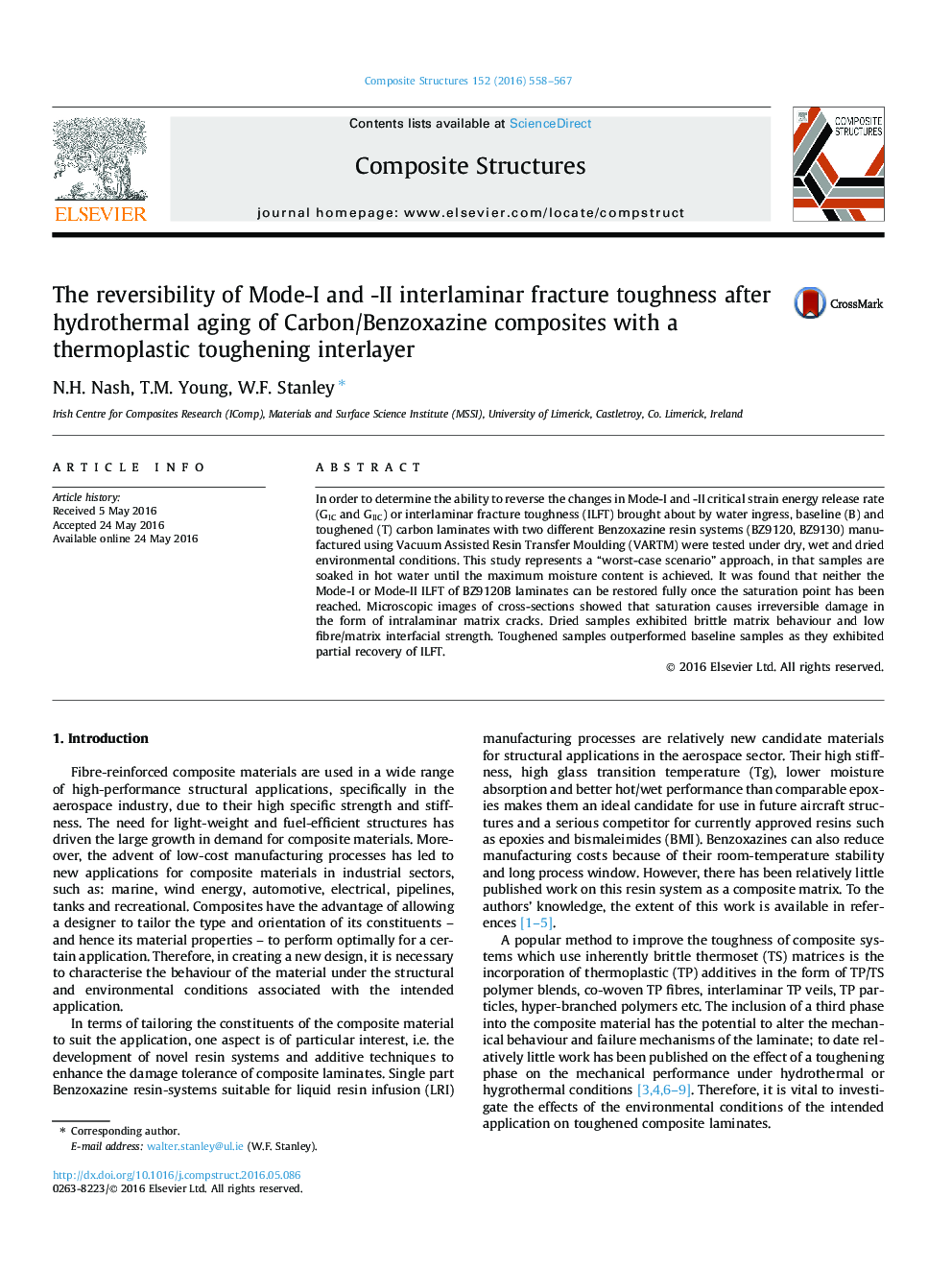| Article ID | Journal | Published Year | Pages | File Type |
|---|---|---|---|---|
| 6705380 | Composite Structures | 2016 | 10 Pages |
Abstract
In order to determine the ability to reverse the changes in Mode-I and -II critical strain energy release rate (GIC and GIIC) or interlaminar fracture toughness (ILFT) brought about by water ingress, baseline (B) and toughened (T) carbon laminates with two different Benzoxazine resin systems (BZ9120, BZ9130) manufactured using Vacuum Assisted Resin Transfer Moulding (VARTM) were tested under dry, wet and dried environmental conditions. This study represents a “worst-case scenario” approach, in that samples are soaked in hot water until the maximum moisture content is achieved. It was found that neither the Mode-I or Mode-II ILFT of BZ9120B laminates can be restored fully once the saturation point has been reached. Microscopic images of cross-sections showed that saturation causes irreversible damage in the form of intralaminar matrix cracks. Dried samples exhibited brittle matrix behaviour and low fibre/matrix interfacial strength. Toughened samples outperformed baseline samples as they exhibited partial recovery of ILFT.
Related Topics
Physical Sciences and Engineering
Engineering
Civil and Structural Engineering
Authors
N.H. Nash, T.M. Young, W.F. Stanley,
